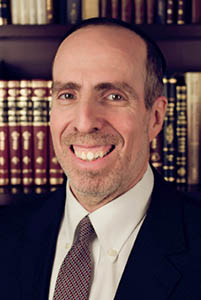
Yes! The Teaneck, Englewood and Tenafly eruvin connect! Anywhere from the northern side of Route 4 all the way north to Clinton Avenue lies well within the eruvin! This author, who helps supervise all three of these high-quality and well-maintained eruvin, made a special effort to ensure that each of these eruvin are linked and connected. What about the eruv chatzerot? How did they coordinate? No worries. This was addressed as well, as we shall explain.
Even after a proper community eruv has been constructed and the area encompassed is thereby rendered a reshut ha-yachid, one may still not carry within it on Shabbat. Despite the fact that it is Biblically permitted to carry from one reshut ha-yachid (such as one’s house) to another (in our case, the outside area enclosed by the eruv), the rabbis prohibited this in many cases. Similarly, this rabbinical prohibition often precludes carrying from one household to another even within the same building. For example, this prohibition applies to an apartment building with at least two observant families. In such situations, it is required to make an eruv chatzerot (referred to by Chazal as an eruv) in order to permit carrying.
An eruv chatzerot (literally “mixing the courtyards”) consists of every household in the reshut ha-yachid contributing some bread to the collective group of households. The bread is stored in one of the houses within the encompassed area. The halacha then views the participants as if they all live in that one house, removing even the rabbinical prohibition against carrying (see Shulchan Aruch, O.C. 366:1).
The Talmud (Shabbat 14b) records that King Shlomo instituted this requirement and a heavenly voice acknowledged the profound wisdom in it. The reason for this rule, as explained by the Rambam (Hilchot Eruvin 1:4), is that otherwise people would become confused about the laws of carrying. The process of the eruv chatzerot is designed to familiarize the community with the laws of carrying. This goal seems to be one of the reasons for the time-honored practice of storing the eruv chatzerot in the synagogue (see Rama, O.C. 366:3). Rav Elazar Mayer Teitz told this author that his father, Rav Pinchas Teitz (of Elizabeth, New Jersey), prominently displayed the eruv in a place within the synagogue where it was easily seen, noting that this was commonly done in Europe. Another advantage of storing the eruv in the synagogue is that community members have access to the eruv on Shabbat, which is an important requirement (see Rav Moshe Sternbac’s Teshuvot Ve-Hanhagot 1:250).
In practice, we do not require every household in a reshut ha-yachid to contribute some bread for the purpose of the eruv. Instead, everyone in the community is granted a portion of the eruv by the process known as zachin le’adam shelo befanav, acquiring something on behalf of another person (see Shulchan Aruch, Orach Chayim 366:9-10,15). This is accomplished by one person handing another the eruv food and the second person lifting the eruv into the air. It is lifted with the intention of acquiring the eruv on behalf of all present and future residents of the area encompassed by the eruv.
A blessing (“al mitzvat eruv”) is recited prior to the procedure of acquiring the eruv on behalf of the community. Then, the formula of “behadein eruva” is recited, explaining the eruv’s intended purpose (see Shulchan Aruch, Orach Chayim 366:15).
The combined Bergen County eruvin comprise four distinct eruvin. Teaneck rabbanim maintain two distinct eruvin—one north of Route 4 and one south of Route 4. The Englewood and Tenafly eruvin are distinct as well. The advantage of remaining distinct is that in case one fails, the others remain intact. However, since people wish to carry from one adjoining reshut ha-yachid (i.e., each distinct eruv) to another they need to be joined by one eruv chatzerot. On the other hand, since each eruv remains distinct it requires a separate eruv chatzerot. How does one accomplish this goal while avoiding an unnecessary bracha?
Rav Mordechai Willig provided the answer. Each community makes its own eruv chatzerot. After each of the four segments makes its own eruv chatzerot, another eruv chatzerot is made for the combined eruvin.
This is how we choreographed this production: Rav Pruzansky made the eruv chatzerot for the northern Teaneck eruv (stored at Congregation Bnai Yeshurun), Rav Rothwachs made the eruv chatzerot for the southern Teaneck eruv (stored at Congregation Beth Aaron), Rav Genack made the eruv chatzerot for the Englewood eruv (stored in Congregation Shaarei Emunah) and Rav Block made the eruv for the Tenafly eruv (stored in Congregation Kehillath Kesher). After these four eruv chatzerot were made, Rav Sobolofsky made the eruv chatzerot for the combined eruvin, which is stored at Congregation Ohr Torah.
The special love between a husband and wife is expressed through deep caring for each other with special attention to all details of the relationship. So too, our deep affection for Hashem is expressed with our loving attention to the detailed halachot regarding Shabbat, eruvin and all areas of Torah. It is with great love for Hashem and community that motivates the eruv team to create and maintain our community eruvin at a high halachic level to the best of our ability.
By Rabbi Haim Jachter
Rabbi Haim Jachter is the spiritual leader of Congregation Shaarei Orah, the Sephardic Congregation of Teaneck. He also serves as a Rebbe at Torah Academy of Bergen County and a Dayan on the Beth Din of Elizabeth.










